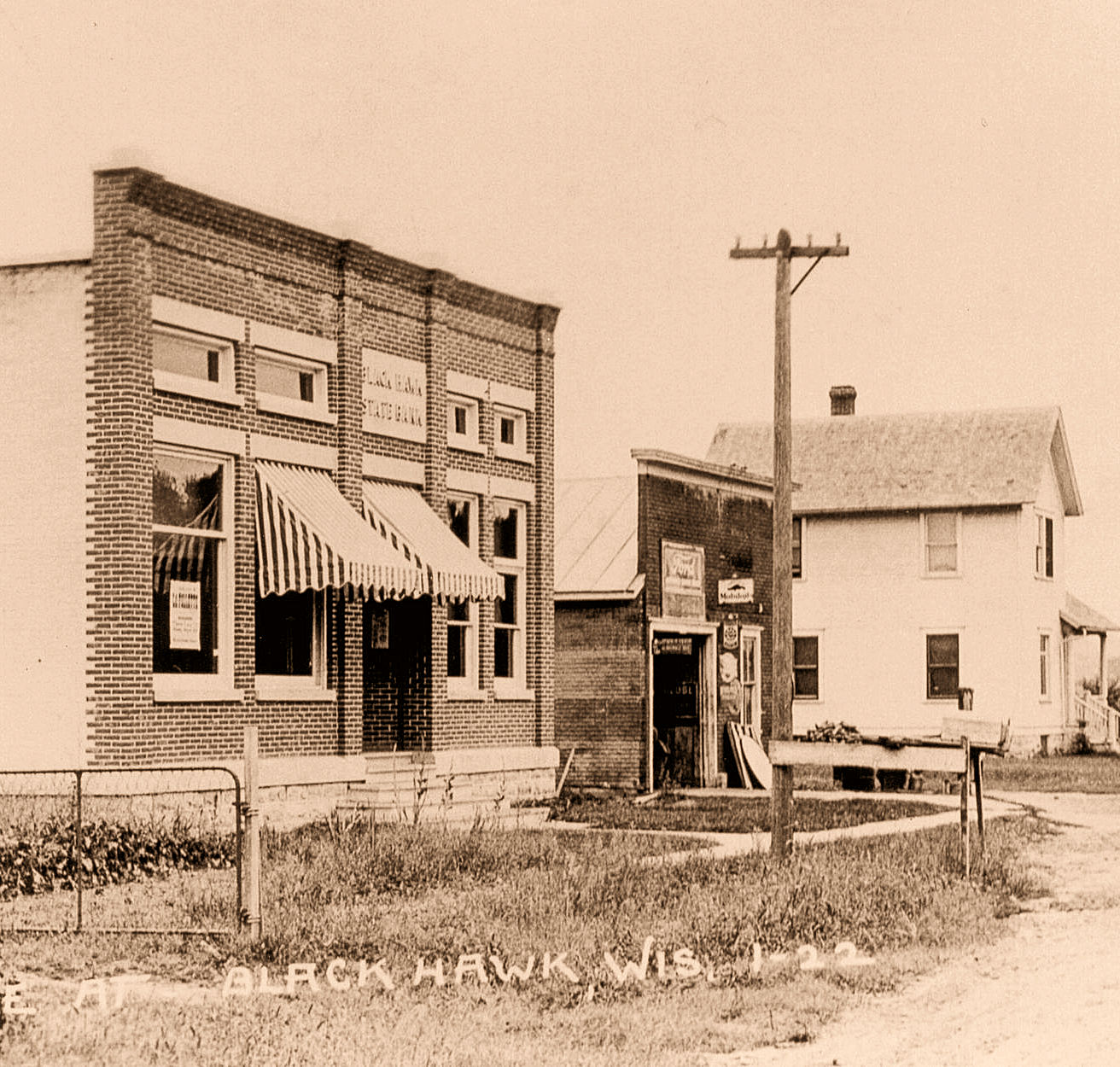Black Hawk
Located in central Troy Township, the village of Black Hawk sits upon the south branch of Honey Creek. Originally settled by the Swiss in the mid-1800's, the village was once the center of commerce in the township.
The early pioneers dammed the nearby creek and built a sawmill to turn out lumber for home construction. The sawmill was converted into a grist mill in 1862. A generator was added in the 1930's which produced electricity for area residents. During the early decades of its existence, the village also had a general store, an ice house (which provided year-round refrigeration for the grocery store), a blacksmith shop, and a sugar beet factory. The village also sported a park near the creek with a bandstand.
A church was built by the early settlers in 1866, who had organized two years previous, to fulfil their spiritual needs. The Old Bethlehem Church of the Evangelical Association was founded upon the principles of no smoking or drinking, no dancing and no card playing. Later it became an Evangelical United Brethren church and today, it is the United Methodist Church. A new structure replaced the old in 1901, retaining a section of the original church. In 1949 a new native limestone building was built by the congregation.
The Black Hawk School, built in 1879 was located to the north of the village, across Honey Creek. It closed in 1955 when the Black Hawk consolidated school opened southeast of the village.
A stock yard, run by the Sauk City Equity Co-op., operated for many years, closing in 1970.
Black Hawk also had a creamery which was built by shareholders in 1887.
In 1870, several German and Swiss farmers decided to plant sugar beets, bolstered by the fact that sugar was going for 18 cents a pound, and the local soil was deemed ideal for its production. Shares were sold for $250 each and participants agreed to commit four acres to beets. Fifty people were required to run the plant, along with large numbers of women and children working in the fields. The first year produced a record crop and everyone saw good times ahead. Unfortunately, the processing plant was not completed in time so that year’s production was a total loss.
The second year was an abysmal failure as the yield was only 4 tons per acre, where the previous year it had been 12 to 15. Most felt the experiment was a failure, but decided to give it one more year. It was a mistake. The beets succumbed to an early frost and the crop was a total loss. After an investment of nearly $48,000, barely 1,500 barrels of sugar were ever produced. A newspaper article, dated May 23, 1873, noted: "The farmers who dropped hop and wheat culture and undertook beet culture and expected to clip coupons from their stock in the beet sugar factory have returned to their hops and wheat and fruit. The factory stands idle. They blame the loss on the incapacity of the superintendent."
Today the small hamlet of Black Hawk has around 24 homes, and a farm machinery repair business.
Photo Caption:
A general store and Post Office was established in 1866. It burned in 1900 and 1920, and was rebuilt each time. Here, George W. Schneller caries on the tradition with a general merchandise store. Farmers having just delivered their milk to the cheese factory, stop to do some grocery shopping.



